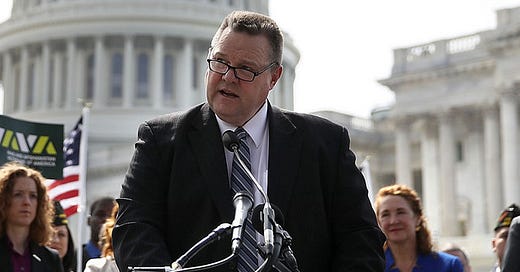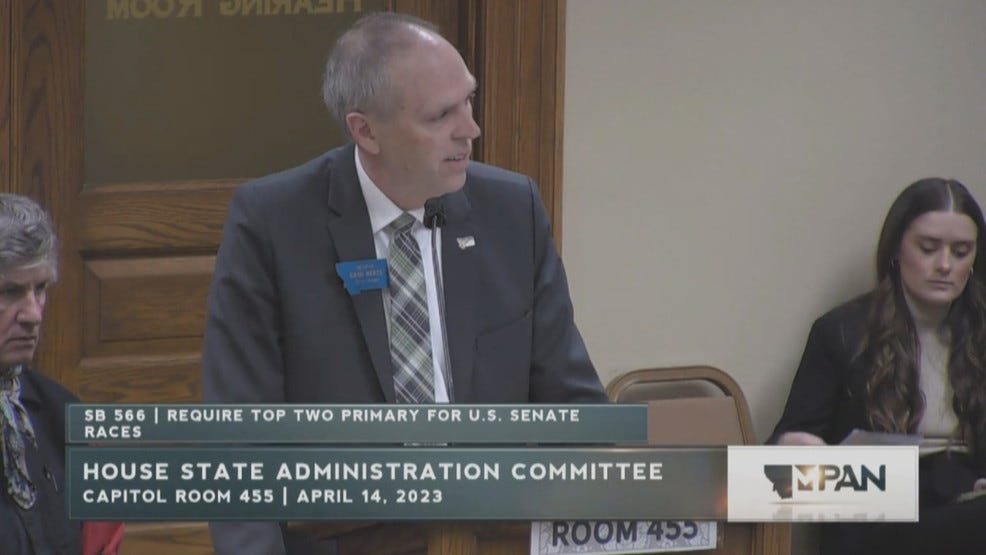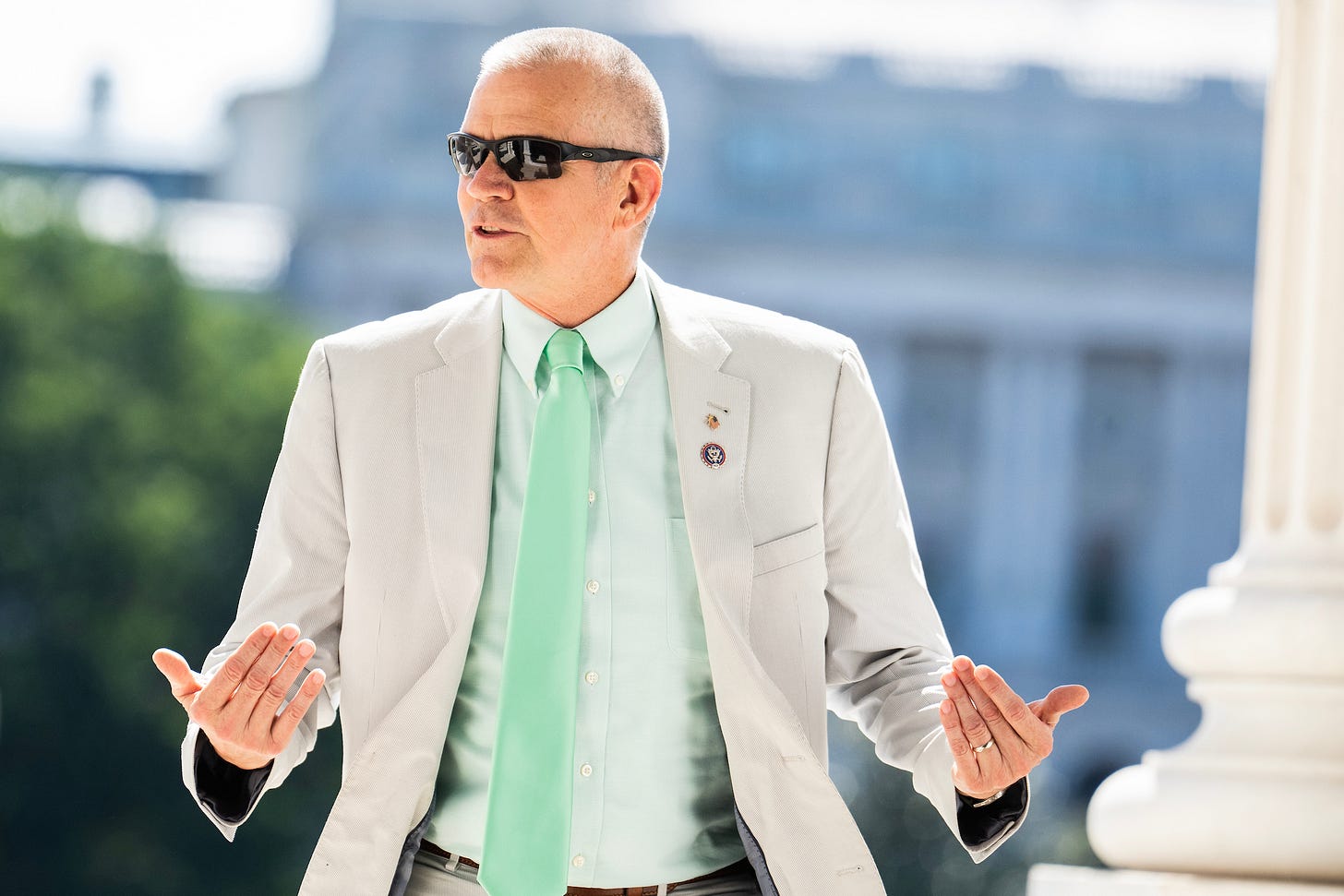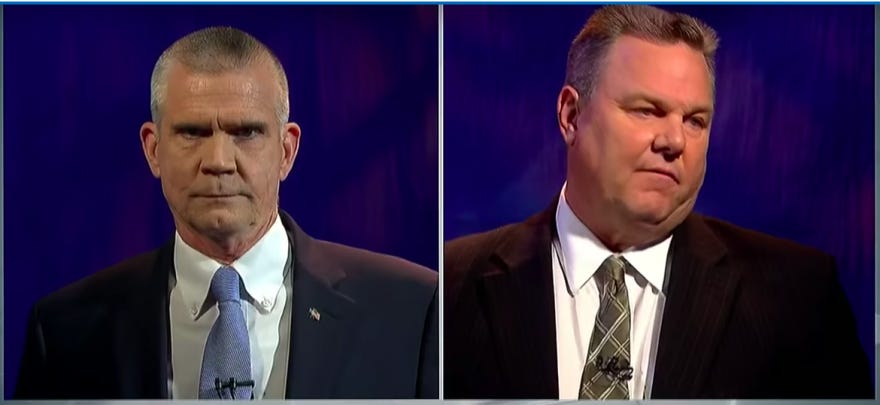Who would win a Republican Primary? A party endorsed, successful CEO without any baggage or a controversial two term Congressman who lost this exact election in 2018? If you chose the latter, you’re probably right.
Montana is, for all intents and purposes, a red state. The last time it voted Democratic on the presidential level was 1992, yet it is currently represented by Democrat Jon Tester in the United States Senate and had a Democratic Governor up until 2020. All this combined means that Montana will likely be one of the most competitive Senate elections of the 2024 cycles and it will pit incumbent, seven-fingered Senator, Jon Tester against either Rep. Matt Rosendale or CEO, former Navy SEAL and NRSC-endorsee Tim Sheehy.
Little polling has been conducted of the race, so this article will instead focus on the fundamentals of this election, the candidates, the Republican primary and what will need to go right or wrong for either side to win this election. This is why I’m dubbing this as the “most losable election in the country,” because it truly is. Former President Donald Trump carried the state by almost twenty points in 2020, a partisan edge that no Democrat should be able to overcome, but that has been Sen. Tester’s brand for the last eighteen years, and it’s hard to see that changing now. Through a series of bad primary nominations and potential gaffes, this article will explore how the Montana’s Senate election will likely play out, and who the losers will be.
Background
To understand the level of fear which Jon Tester, a farmer turned Senator who sports a flat top and three less fingers due to a meat grinder accident, strikes in the hearts of the Montana Republican party you have to look no further than their failed efforts to instate a top two primary system for the 2024 election. Tester has won three elections to the United States Senate in 2006, 2012 and 2018. In his first two elections he received a plurality thanks to a Libertarian candidate taking some of the vote and in 2018 he won with a majority, in spite of Libertarian Rick Breckenbridge claiming 3% of the vote. These losses have embittered Republicans who, on shaky grounds, blame Libertarians for their losses in 2006 and 2012, instead of internalising the result and asking how they were losing these elections when other Republicans were carrying the state by ten points or more.
This brings us to April 2023, and the Montana State Senate introducing a bill which would require the winner of the 2024 Senate election (and no other election that year or ever again) to win a majority of the vote. A blatant act of partisan rigging, this bill went down about as well as sour milk, with Democrat and Libertarian activists being enraged at such a transparent attempt to swing the election towards the GOP. After this backlash, the state party backtracked and amended the bill to be applied to all future Senate elections in Montana, but it never cleared the State House and the push for a top two primary system is officially dead. The fact that state lawmakers were willing to throw themselves under the bus to support such an unpopular method to try and oust Sen. Tester shows how indomitable he truly may be come November 2024.
The Republican Primary
While Tim Sheehy is currently the only declared candidate on the GOP side, it seems inevitable that Rep. Matt Rosendale will run too. Sheehy has a solid resume outside of politics, having served his country as a Navy SEAL and then becoming the CEO of an aerospace company afterwards, he is also Senate Republican’s pick to challenge Tester having been handpicked by Senator, and head of the NRSC, Steve Daines (R-MT) and endorsed by Montana Governor, Greg Gianforte and a handful of other Senators. He has no electoral history to speak of but also no skeletons in his closet as of yet. If he were the nominee he would also be able to self fund his campaign, which is becoming more important for swing state Republicans as more and more state parties see their finances running dry.
On the flipside, Matt Rosendale is somewhat of a maverick, but this has made him a bit of a legislative loner, exhibited by the fact that none of Montana’s federal politicians have endorsed him, but Sens. Rand Paul (R-KY) and Mike Lee (R-UT) have encouraged him to run. He has made waves in right wing circles, being endorsed by the Club for Growth for his 2018 Senate run and having their tentative support for his 2024 ambitions. He has also made some enemies as a result of his outspoken right wing tendencies, including when he waved off a phone call from Donald Trump as he held out against backing Rep. Kevin McCarthy (R-CA) for the speakership.
What he potentially lacks in federal support however he is able to make up with support from local legislators, and a group of 37 state lawmakers exemplified this in August by writing a letter urging him to run. This comes amidst a recent poll which has Rosendale over thirty points clear of Tim Sheehy, polling at 52% to the CEO’s 21%, suggesting that Rosendale’s name recognition from his time in Congress and failed run for Senate in 2018 may carry him to a primary victory should he run.
But does Sheehy have a path to victory?
The short answer is yes. The primary is still nine months away, and Sheehy has this time to build a profile in the state to combat Rosendale’s entrenched, and significant, level of support but it will certainly be an uphill battle. This comes as a blow to Senate Republicans who see Sheehy as their best shot of flipping this seat in 2024 and who don’t trust Rosendale after losing this election in 2018. High ranking senate Republicans, including Minority Whip, John Thune (R-SD) have stumped for Sheehy, assuming that he would clear the field, but the race simply isn’t developing in that way as of yet, even after Sheehy has begun plastering the airwaves with ads.
It is also true that Sheehy would likely be a superior candidate to Rosendale. Rosendale is a member of the divisive and far right Freedom Caucus, whose members have performed poorly in recent elections, and don’t have the same cross party appeal that less tainted and more moderate candidates, such as Sheehy would. This is becoming a common theme in Republican primaries, with candidates like Kari Lake, Dr Oz, or J.R. Majewski beating their opponents by tacking to the right to alienate moderates and then failing to realign their campaigns by November, forever being tarred as far right candidates in the view of voters. The more moderate candidates in these races would have likely seen much better performances in their general elections, and it wouldn’t be surprising if this pattern repeats in Montana.
As of writing, due to his grassroots support and polling advantage, I have to give the edge to Rep. Matt Rosendale should he choose to run for Senate. He has high name profile, being elected state-wide three times, and local support which Sheehy simply can’t imitate. A big spending buzz, and local endorsements, could swing the tide for Sheehy, but currently this primary is Rosendale’s to lose.
The General Election
When it comes to the general election, this race should be closer than the GOP primary and will absolutely be one of the closest in the nation. It’s impossible to put into words how important Montana is for either party to help either maintain or gain a majority in the Senate. It is a must win for either party yet it pits a chronic underperformer in likely nominee Matt Rosendale against serial overperformer Jon Tester in a state which should vote by around ten-fifteen points for the eventual Republican Presidential candidate. On paper, a generic Republican would blow a generic Democrat out of the water, but Rosendale is far below the bar of a generic Republican and Tester far exceeds an average Democrat. The long and short of it is that this is anyone’s race to lose.
Tester’s Electoral History
As noted above, Tester is a serial overperformer. In 2006, he outshone John Kerry’s 2004 Presidential performance by ten points, and in the same year did ten points better than the Democratic nominee for Montana’s sole congressional district. In 2012, Tester performed seven points better than Barrack Obama and on par with Democrat Steve Bullock, who successfully ran for Governor. In 2018, the Senator performed fifteen points better than Hillary Clinton’s 2016 showing, and around four points better than the Democratic nominee for Montana’s Congressional District on the same ballot.
What this goes to show is that Tester is an electoral juggernaut but one that could be bested in the right circumstances and by the right candidate.
2024 is the right year for Republican’s to have Tester in their sights, as the biggest thorn in his side is that he is sharing a ballot with Joe Biden, in a state which will overwhelmingly back the Republican party’s presidential candidate. While he was able to overcome running alongside a Presidential election in 2012, it’s no sure thing that this performance will hold in 2024. Since 2006, his overperformances have narrowed and his first and most recent elections were in blue wave years where Democrats performed very well across the board. Tester losing his edge may not be because his brand of politics has become less popular in the Treasure State, but may instead be due to increasing polarisation, which has cut split ticket voting to incredibly low levels, although some politicians such as Gov. Josh Shapiro (D-PA) were able to buck that trend as recently as 2022 thanks to having an extreme opponent, much like Tester would likely be able to paint Rep. Rosendale as.
Head to Head
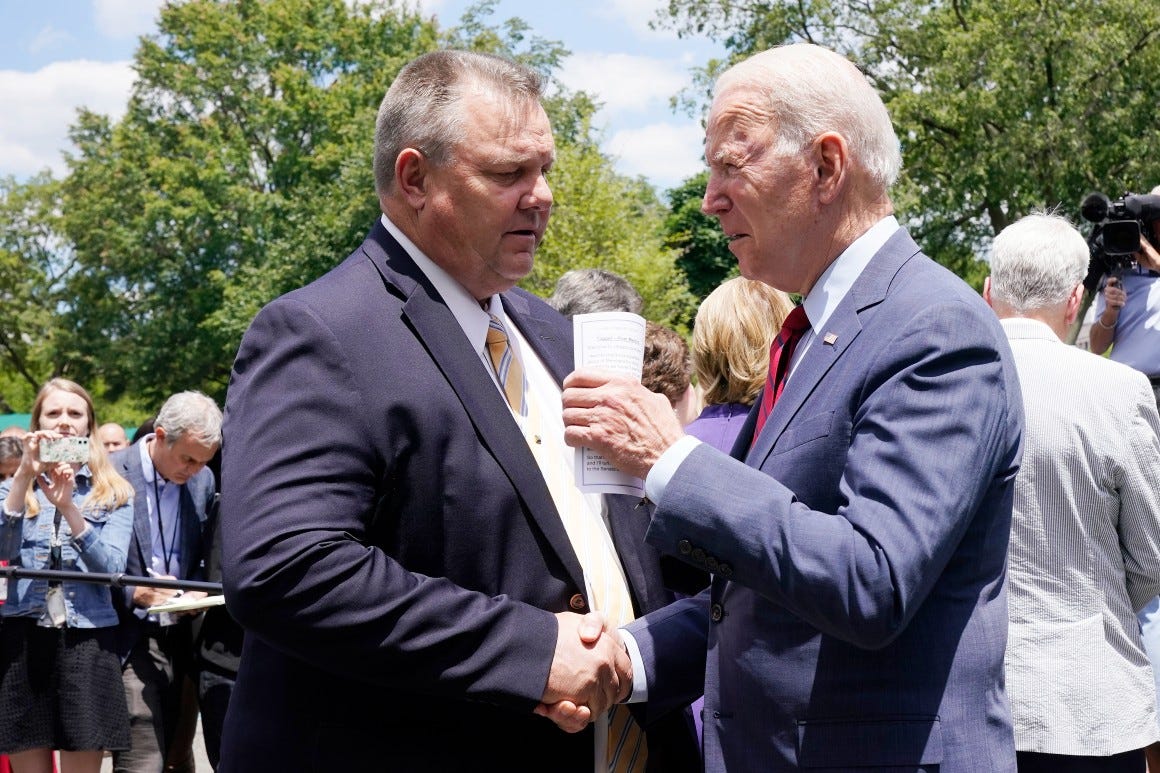
These two candidates are very much known quantities, having run against each other in 2018 - with Tester besting Rosendale, who was the State Auditor at the time. This race put on full display what Tester’s strengths are and, crucially, where Rosendale is weak.
Off the bat, Rosendale in his own right is a weak fundraiser, raising only $6 million against Tester’s $22 million in their 2018 race, and hasn’t had the rosiest of fundraising reports this year either, while Tester has had a fairly strong haul. Although this may be negated as the incredibly well funded Club for Growth have promised tentative support for Rosendale, as they did in 2018, and would be able to fund his campaign.
Further comparisons between Sen. Tester with Rep. Rosendale also make for tough reading for Rosendale and Senate Republicans. The Senator is backed up by a strong approval rating, being ten points above water overall, which is where he was at the time of the 2018 election, suggesting that a majority of the state approves of the work he’s getting done in the Senate. Tester also likely benefits from a more hands on campaigning style, where he aims to visit every house he can and talk to as many voters as possible, while Rosendale lacks this same experience. Tester’s story is also more relatable to Montanans, as he still works as a farmer when he’s back in the state and comes across as far more humble than most politicians. To some extent, this can mitigate the partisan edge which the Congressman benefits from, as the Democrat’s extensive campaigning has bolstered his support and recognition with Montanans to unusual heights.
Regarding actual work in Congress, Tester has a history of spearheading and guiding through serious legislation, while Rosendale is seen as an obstructionist, most notably being a leader in the charge against now-Speaker Kevin McCarthy’s nomination. This is a sharp turn from 2018, when Rosendale was seen as being in step with Republican leadership, attending fundraisers with Sen. Minority Leader Mitch McConnell (R-KY), and touting his ability to work with a Republican Senate majority to work on key, conventional issues which conservatives can rally behind. Fast forward to 2024, and he is decrying McConnell as a RINO and not wishing for any support from the Republican establishment, a move which has gained him headlines but it’s hard to say that it will gain him any swing voters. As exhibited by endorsements from state-wide and federal office holders in Montana, Rosendale is a bit of a loner, only embraced by the fringe or local politicians who knew him personally from his time in state politics.
Compare this with Tester and you get a different picture. He has endorsements from the Democratic fray, including moderate Senator Joe Manchin (D-WV), who Tester often imitates in rhetoric to keep cross-party support. A cornerstone of Tester’s 2018 campaign was how often he was in agreement with President Trump, and this relationship was only severed when Tester enraged Trump by questioning the past of his nominee for the Department of Veteran Affairs, Ronny Jackson. Had this saga not happened, Tester likely would’ve won a larger majority than he ended up winning with, and it’s unlikely that Montana voters will remember this six years on.
Wrapping Up
Tester is still the same Senator as he was in 2018, a dirt farmer with a moderate streak in a deeply Republican state, while Rosendale is possibly a weaker candidate than then - and he still lost in 2018.
This race is still a toss-up and I believe that it is anyone’s to lose because, on paper, Republican’s should have this in the bag but if a rerun of 2018 is to occur then it’s difficult to not back Tester. As primary season approaches I will revisit this race, and if Sheehy is able to win the primary then November becomes a lot more grim for the incumbent Democrat, but as the race currently stands, Sheehy needs a miracle to pull a primary victory off, and Tester may well be able to do the impossible and win a fourth term in the United States Senate.

